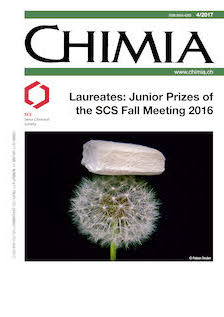Unveiling the Nature of Charge Carrier Interactions by Electroabsorption Spectroscopy: An Illustration with Lead-Halide Perovskites
DOI:
https://doi.org/10.2533/chimia.2017.231Keywords:
Charge carrier interactions, Electroabsorption, Lead-halide perovskites, Photovoltaic devices, SpectroscopyAbstract
Unravelling the nature of the interactions between photogenerated charge carriers in solar energy conversion devices is key to enhance performance. In this perspective, we discuss electroabsorption spectroscopy (EAS), as the spectral bandshape of the electroabsorption (EA) signal directly depends on the strength of the charge carrier interactions. For instance, the electroabsorption response in molecular or confined excitonic systems can be modelled perturbatively yielding the Stark effect. In contrast, most solids exhibit weaker interactions, and a perturbative approach cannot be taken in general. For solids with negligible charge carrier interactions, one resorts to the Franz-Keldysh theory of a continuum in a field, that, in the low-field limit, simplifies to the low-field FKA effect. Alternatively, when the continuum approximation breaks down, the problem of a Wannier exciton in a field has to be solved, and numerical methods emerged as the best solution. We illustrate our discussion with two examples involving lead-halide perovskites, a new, high-stake solar cell material. In the first example, we discuss the lineshape of the electroabsorption response for thin-films of lead-iodide perovskite, that sustains the photogeneration of free carriers. In the second example, we address a confined excitonic case with lead-bromide perovskite nanoparticles, and demonstrate the presence of so-called charge-transfer excitons.Downloads
Published
2017-04-26
Issue
Section
Scientific Articles
License
Copyright (c) 2017 Swiss Chemical Society

This work is licensed under a Creative Commons Attribution-NonCommercial 4.0 International License.
How to Cite
[1]
Chimia 2017, 71, 231, DOI: 10.2533/chimia.2017.231.







